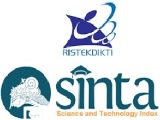Kuat Tekan Beton Geopolimer dengan Variasi Penambahan Limbah Las Karbit
Abstract
Keywords
Full Text:
PDF (Bahasa Indonesia)References
Beton, p., seluler, r., lightweight, c., sipil, j. T., teknik, f., & negeri, u. (2011). Yogie risdianto. 1–7.
Dewi, n. R., dermawan, d., & ashari, m. L. (2016). Studi pemanfaatan limbah b3 karbit dan fly ash sebagai bahan campuran beton siap pakai (bsp) (studi kasus : pt. Varia usaha beton). Jurnal presipitasi : media komunikasi dan pengembangan teknik lingkungan, 13(1), 34. Https://doi.org/10.14710/presipitasi.v13i1.34-43
Gora, a. M., ogork, e. N., & haruna, s. I. (2017). Effect of calcium carbide wastes as admixture in mortar. 5(11), 655–660. Https://doi.org/10.21276/sjet.2017.5.11.8.
Joel, m., & edeh, e. J. (2014). Stabilization of ikpayongo laterite with cement and calcium carbide waste. 20, 49–55.
Kacapuri, j., keilmuan, j., & sipil, t. (2022). Jurnal kacapuri jurnal keilmuan teknik sipil volume 5 nomor 1 edisi juni 2022. 5, 381–389.
Karyawan salain, i. M. A., wiryasa, n. M. A., & adi pamungkas, i. N. M. M. (2021). Kuat tekan beton geopolimer menggunakan abu terbang. Jurnal spektran, 9(1), 76. Https://doi.org/10.24843/spektran.2021.v09.i01.p09
Manuahe, r., sumajouw, m. D. J., & windah, r. S. (2014). Kuat tekan beton geopolymer berbahan dasar abu terbang (fly ash). Jurnal sipil statik, 2(6), 277–282.
Mustakim, y., nurlina, n., & syahbanu, i. (2019). Sintesis dan karakterisasi geopolimer berbahan dasar kaolin capkala dengan variasi rasio mol sio2/al2o3. Indonesian journal of pure and applied chemistry, 2(2), 84. Https://doi.org/10.26418/indonesian.v2i2.36912
Purnamasari, e., gazali, a., banjarmasin, b., banjarmasin, b., banjarmasin, b., portland, s., & liat, t. (2018). Bahan semen terhadap kualitas kuat tekan mortar dengan variasi proporsi yang berbeda ( kajian terhadap adukan mortar 1 pc : 3 ps ) teknik sipil , 22201 , fakultas teknik , universitas islam kalimantan muhammad arsyad al teknik sipil , 22201 , fakultas tek. Revision 2.
Ridwan, m. (2018). Limbah fly ash pltu tanjung jati b jepara ( characteristic of geopolymer concrete using fly ash waste from pltu tanjung jati b jepara ) fakultas teknik sipil dan perencanaan limbah fly ash pltu tanjung jati b ( characteristic of geopolymer concrete using .
Somalinggi, l. J., phengkarsa, f., febriani, l., program, m., teknik, s., kristen, u., & paulus, i. (2020). Pengaruh limbah karbit / calcium carbit sebagai bahan substitusi semen pada beton. 2(4), 289–297.
DOI: http://dx.doi.org/10.30811/portal.v16i1.3791
Refbacks
- There are currently no refbacks.
Copyright (c) 2024 Yayan Adi Saputro






